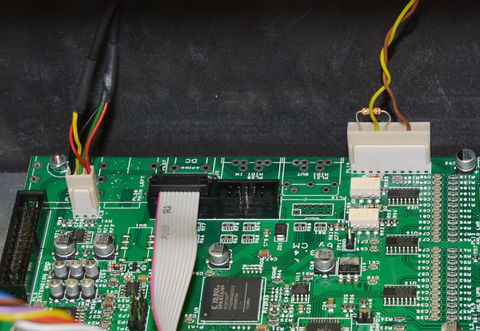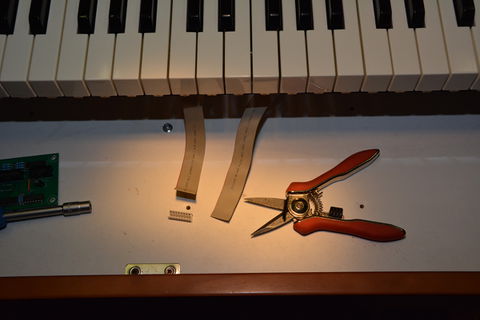HX3 KeyB Duo Installation: Unterschied zwischen den Versionen
Aus KeyboardPartner Wiki
Zur Navigation springenZur Suche springen
Bovist (Diskussion | Beiträge) KKeine Bearbeitungszusammenfassung |
Bovist (Diskussion | Beiträge) KKeine Bearbeitungszusammenfassung |
||
| Zeile 1: | Zeile 1: | ||
This page shows installation of an HX3 mainboard (FPGA based) as a replacement for KeyB Duo sound generator (DSP based). Board is completely remoted by MIDI from KeyB controller. All knob/button/drawbar functions are retained. Installation is quite simple, but requires soldering skills and crimping flat ribbon cables. Click pictures to enlarge. | This page shows installation of an HX3 mainboard (FPGA based) as a replacement for KeyB Duo sound generator (DSP based). Board is completely remoted by MIDI from KeyB controller. All knob/button/drawbar functions are retained, although some have different functions (i.e. BASS pot becomes SWELL TRIM CAP). Installation is quite simple, but requires soldering skills and crimping flat ribbon cables. Click pictures to enlarge. | ||
Replacing the KeyB key scan is optional. Installing a FatarScan2 board for direct connection to HX3 yields much lower key latency. | Replacing the KeyB key scan is optional. Installing a FatarScan2 board for direct connection to HX3 yields much lower key latency. | ||
Version vom 30. August 2016, 07:25 Uhr
This page shows installation of an HX3 mainboard (FPGA based) as a replacement for KeyB Duo sound generator (DSP based). Board is completely remoted by MIDI from KeyB controller. All knob/button/drawbar functions are retained, although some have different functions (i.e. BASS pot becomes SWELL TRIM CAP). Installation is quite simple, but requires soldering skills and crimping flat ribbon cables. Click pictures to enlarge.
Replacing the KeyB key scan is optional. Installing a FatarScan2 board for direct connection to HX3 yields much lower key latency.
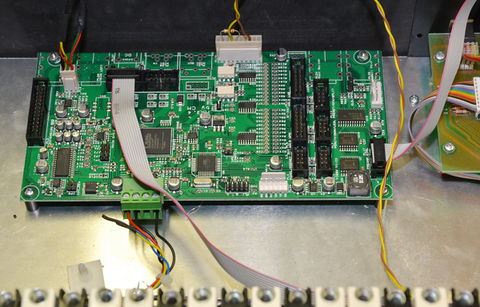
Remove KeyB DSP board and install HX3 board with plastic spacers, using M3 screws. Some holes must be drilled in base plate. Route 10-wire ribbon cable from PL17 PREAMP CTRL to KeyB controller board. Note colors of power supply connector. Only 5V rail (red) and ground (black) is needed, other wires must be insulated. If HX3 only has a 2-pin terminal for power supply, connect both black wires to GND input.
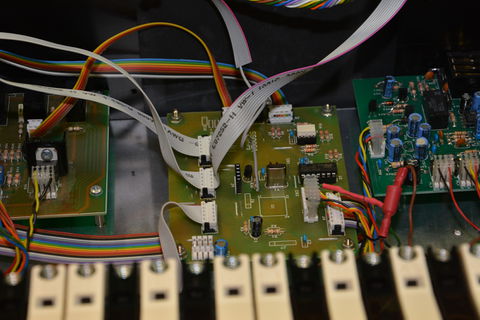
To prevent KeyB to send MIDI data before HX3 is ready to accept, the KeyB Duo controller's RESET signal must be delayed. This is done by using a signal on wire 8 of HX3 PL17 which goes HIGH when HX3 is ready. Solder single wire #8 from ribbon cable to R10 on KeyB controller board as shown. Use R10 pin pointing to U1. Cut off all other wires of PL17 cable.
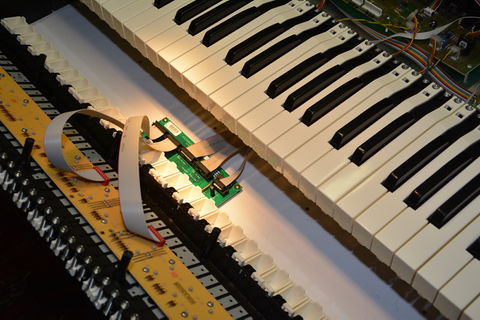
Route 10-wire ribbon cable from HX3 PL14 to FatarScan board. Disconnect Fatar keybed cables from KeyB MIDI controller and install 16-pin flat ribbon connectors, pin 1 pointing to coloured wire. Connect 16-pin connectors to FatarScan2 board. Note position of upper/lower notes (matrix section) of Fatar keybeds.
